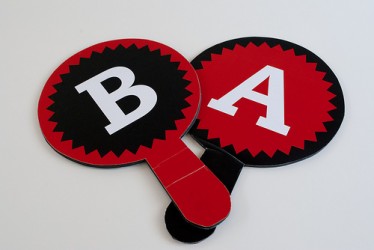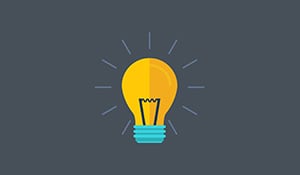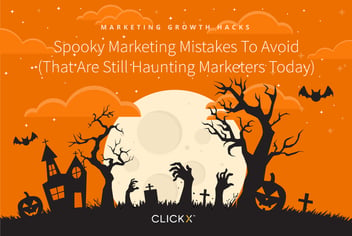8 Rules of A/B Testing
Marketers who aim to find accurate data seek for the best source or system that provides the most accurate, straightforward and marketable data sets. More often than not, when we fail to find the right data, we tend to test it, alter the methodology used to obtain it, and go back right from the start to run the process again. However, what most of us seem to neglect is the importance of frequently testing data to ensure that it’s seamless.
A/B testing is a simple yet effective method of marketing testing: an art of simultaneously subjecting two versions to experimentation in order to measure which version renders more successful results for real-world use. The art in marketing science indeed gives hope for the flowchart reader, particularly when considering the following eight key rules of A/B testing before taking on your internal opponent. 
1. Hypothesize.
During your A/B testing campaign’s formation stages, you could start an argument in your head simply by noting factual observations, which you can test using variables and proven marketing metrics. This helps you decide whether to withdraw your summary or expose it as truthful. For instance, you could assume that infographics found on a certain homepage have the potential to boost click-through ratios. This statement serves as the basis of your test, and it acts as a measuring tool as you successfully batter your hypothesis. It’s essential for every A/B testing facility to start with properly thought-out hypothetical statements.
2. Develop a singular variable.
In many cases, hypothetical statements circle around a specific challenged variable. Since your test will focus on challenging this single variable, you should see to it that all other parts stay intact during your testing. Let’s take the previous example: If you’re challenging the same infographics placement, then you shouldn’t concentrate on any other surrounding content, linkage, or other forms, since these are not significant elements in your original line of questioning. Take note that if you have secondary variables, you’ll have to come up with separate hypothetical statements and set up another variable to challenge.
3. Create a success measurement.
Since a hypothesis can’t be tested against itself, you’ll have to find a distinct measurement to be used to assess your original statement’s overall veracity. Your A/B testing variable must have a grading system. Taking the infographics argument, the success measurement could encompass your highest converting items on the pages such as content, sales graphics and links. Through this, your overall hypothetical statements can have something to gauge against.
4. Assess using numerical measurements.
The volume by which you verify your hypothesis is another valuable measurement of effective A/B testing. You could achieve this whether through clicks, responses or impressions. It’s important to test through significant numbers for quantified differentiations as well as accuracy for future usage. For example, running your test against 10,000 visits will help you determine the number of clicks on your infographics and utilize the ratios for measuring hypothetical indemnity. Make sure to assess your overall test size based on your daily or monthly traffic volumes.
5. Choose whether to split groups.
It’s your choice to decide whether to run an entire mass of data testing to a single control group, or to split it 50/50 against the hypothetical metric and an isolated metric. You may even choose to break the group into other percentages like 80/20 or 60/40. Ideally, an accurate test would expound one specific resource, evaluate the results, and use the same method to retest against another test group. Maintain fairness in the testing field so results will naturally yield the real champion.
6. Select groups randomly.
You could make the testing procedure rather interesting by selecting random subjects. It may also open new opportunities for future tests. Avoid biased selection; pick first letters in names, choose a number in Excel between 1 and 80, and so on. This evens up the competition and prevents you from choosing favorites. Use your creativity to hand-pick randomization techniques for choosing your test group.
7. Avoid over-testing.
Choosing variances in testing is great, but be sure not to over-test your hypothesis, as it could lead to inaccurate data reporting and test results. Your overall testing procedure can become much easier when you specify dynamics in testing subroutines. Don’t forget to pay close attention to your single most challenged data set, while managing to avoid a lot of critical testing errors.
8. Document results accurately.
It’s not hard to document the final tallies of your A/B testing campaign, as there are software programs you can use. One brilliant way to document results is to write a blog post that discusses your hypothetical statement, the number of responses established as the level for your test, the subjects involved to propagate the test and the ultimate results. Conclude your blog post with possible solutions or suggested follow-up testing. You could also open up a forum for discussion to gather insight into your hypothesis.
Conclusion
Today’s dynamic marketing world is continually changing, and there’s little we can consider concrete, especially since we need to be alert to variances in campaigns and the methods used to track them. Savvy marketers will always perform A/B testing on each major level, including PPC advertisements, as the chief goal of every professional is to achieve the highest ROIs with the lowest costs. The above eight steps are handy tips that you can apply to your testing. Through these tips, step up your marketing and match your best converting campaigns. Find out if you can still improve what you deem already flawless.



